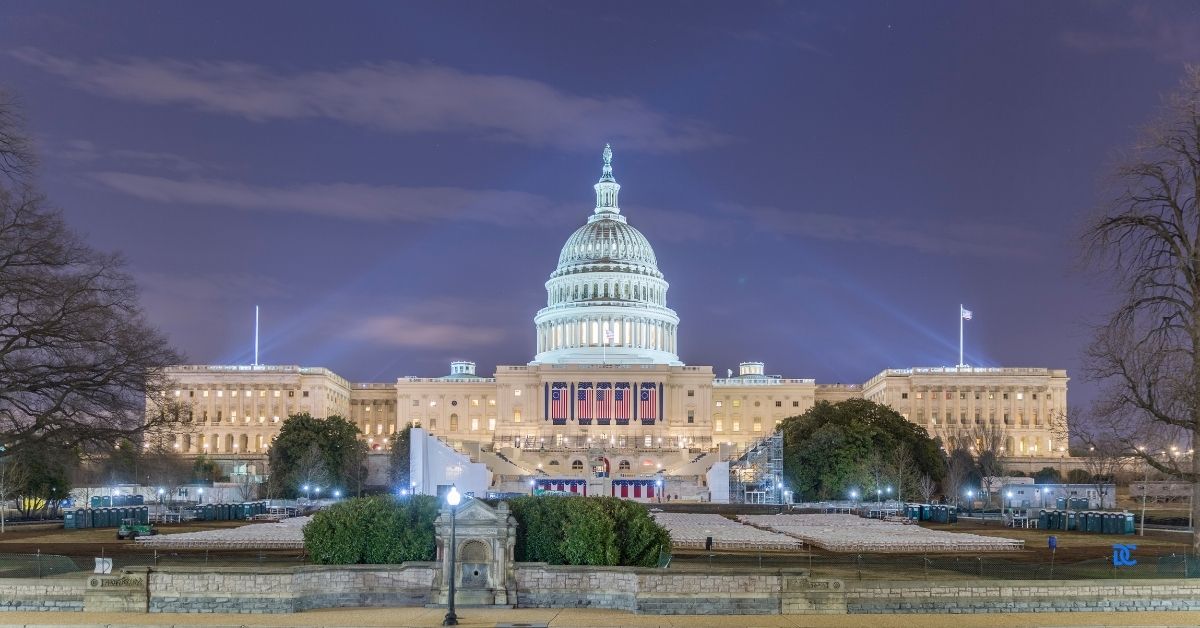In a significant departure from traditional inaugural ceremonies, President-elect Donald Trump has announced that his inauguration will take place indoors due to the dangerously cold temperatures projected in Washington, D.C. This decision aims to ensure the safety and comfort of attendees, including law enforcement, first responders, and thousands of supporters.
On Friday, Trump took to his social media platform, Truth Social, to declare that his inauguration address, prayers, and other speeches will be delivered inside the United States Capitol Rotunda. This venue choice mirrors the historic move made by former President Ronald Reagan in 1985, who faced similarly harsh weather conditions.
“I have ordered the Inauguration Address, in addition to prayers and other speeches, to be delivered in the United States Capitol Rotunda, as was used by Ronald Reagan in 1985, also because of very cold weather,” Trump stated in his post.
In addition to the indoor ceremony, Trump announced that the Capital One Arena will be opened on Monday for live viewing of the event and to host the Presidential Parade. He emphasized that he will join the crowd at the arena following his swearing-in.
Also Read
“We will open Capital One Arena on Monday for LIVE viewing of this Historic event, and to host the Presidential Parade. I will join the crowd at Capital One, after my Swearing In,” Trump added.
Officials expressed significant concerns about the low temperatures forecasted for Inauguration Day, which could pose health risks to attendees and participants. The anticipated weather includes temperatures in the low 20s, which is approximately 20 degrees below normal for the time of year, making it potentially the coldest inauguration since Reagan’s second swearing-in.
Projected Weather Conditions during Inauguration Day
- Temperature: Low 20s°F at noon
- Wind: 10 to 20 mph with gusts up to 30 mph
- Wind Chill: Around 10 degrees during daylight, potentially dropping into single digits after sundown
- Precipitation: Mix of rain and snow possible on Sunday, with Monday expected to be cold and windy but dry
Trump addressed these concerns directly, urging attendees to dress warmly and highlighting the dangers posed by the harsh weather.
“I don’t want to see people hurt, or injured, in any way. It is dangerous conditions for the tens of thousands of Law Enforcement, First Responders, Police K9s and even horses, and hundreds of thousands of supporters that will be outside for many hours on the 20th (In any event, if you decide to come, dress warmly!),” Trump posted.
The last instance of an indoor inauguration occurred in 1985 when President Ronald Reagan took the oath of office inside the Capitol Rotunda due to frigid temperatures that day. Reagan’s daytime temperatures dipped to 7 degrees Fahrenheit with a windchill of -25, leading to the cancellation of the traditional inaugural parade.
Historical Indoor Inaugurations
- James Monroe (1817): Monroe’s second inauguration was moved indoors to the Old Brick Capitol in Washington, D.C., because of a snowstorm.
- William Howard Taft (1909): Taft’s inauguration was moved indoors to the Senate Chamber due to a severe blizzard that covered Washington, D.C., in snow and ice.
- Ronald Reagan (1985): Reagan’s second inauguration was held in the Capitol Rotunda because the temperature outside dropped to a dangerously low -2°F (-19°C), with wind chills making it feel even colder.
- Gerald Ford (1974): Ford’s swearing-in as president was conducted indoors at the White House after Richard Nixon’s resignation, making it a unique, unscheduled ceremony.
- Chester A. Arthur (1881): Arthur’s initial swearing-in happened at his home in New York City following the assassination of President James Garfield. The formal inauguration later occurred indoors at the Capitol.
Why Indoor Inaugurations Happen
Indoor inaugurations typically occur due to:
- Severe Weather: To protect attendees and ensure the safety of the ceremony.
- Security Concerns: To maintain tighter control over the event.
- Sudden Presidential Transitions: Following a president’s death, resignation, or unexpected events.
While outdoor inaugurations are preferred for their grandeur and inclusivity, indoor ceremonies have provided a practical and historic alternative when conditions required it.






